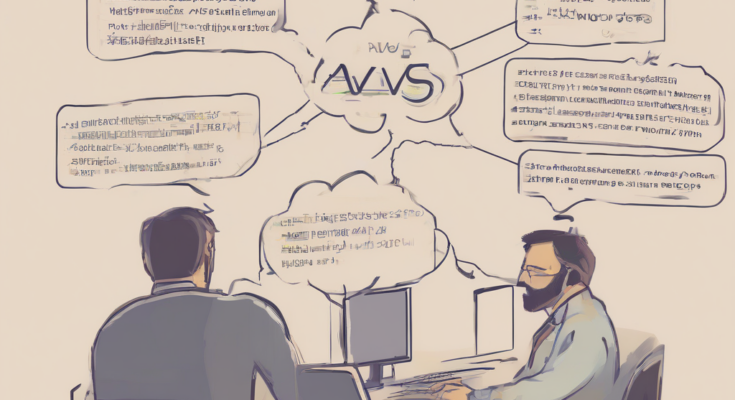Mastering AWS with Terraform: A Comprehensive Guide for Providers
Terraform, HashiCorp’s Infrastructure as Code (IaC) tool, empowers you to define and manage your infrastructure in a declarative manner. When working with AWS, the AWS provider is the cornerstone of your Terraform configuration, acting as the bridge between your code and the vast array of AWS services. This guide delves into the intricacies of using the AWS provider in Terraform, covering essential concepts, best practices, and advanced techniques.
Understanding the AWS Provider
The AWS provider is a crucial component that allows Terraform to interact with your AWS environment. It handles authentication, authorization, and the intricate details of interacting with various AWS services. Before you start, ensure you have the AWS CLI installed and configured. This provider requires appropriate AWS credentials to function correctly. These credentials can be configured via environment variables, shared credentials files, or IAM roles for enhanced security.
Authentication and Authorization
- Environment Variables: Setting AWS_ACCESS_KEY_ID, AWS_SECRET_ACCESS_KEY, and AWS_SESSION_TOKEN in your environment.
- Shared Credentials File: Utilizing the standard AWS credentials file located at ~/.aws/credentials.
- IAM Roles for EC2 Instances (Recommended): Leveraging IAM roles to grant temporary, restricted access to specific AWS resources without managing long-term credentials.
- AWS IAM Authentication (For Enhanced Security): Using this method reduces the need for hardcoded credentials within your Terraform code, enhancing security and maintainability.
Choosing the right authentication method is vital for security. Using IAM roles minimizes the risk of exposing sensitive credentials. Always follow the principle of least privilege, granting only the necessary permissions to your Terraform configuration.
Configuring the AWS Provider in Terraform
The AWS provider is declared within your Terraform configuration file (typically `main.tf`). This declaration specifies the region, profile (if using multiple profiles in your credentials file), and other optional settings. Below is a basic example:
provider "aws" {
region = "us-west-2"
profile = "my-aws-profile"
}
The `region` attribute specifies the AWS region where your resources will be created. The `profile` attribute allows you to select a specific profile defined in your AWS credentials file. You can also specify other attributes such as `assume_role` for cross-account access.
Working with AWS Resources
Once the provider is configured, you can begin defining and managing AWS resources using Terraform’s resource blocks. Each resource block specifies the type of resource (e.g., `aws_instance`, `aws_s3_bucket`, `aws_security_group`), its name, and its configuration.
Example: Creating an EC2 Instance
resource "aws_instance" "example" {
ami = "ami-0c55b31ad2299a701" # Replace with appropriate AMI ID
instance_type = "t2.micro"
}
This code creates a simple EC2 instance using a specified AMI and instance type. More complex configurations would involve specifying security groups, key pairs, and other settings.
Managing Multiple AWS Accounts and Regions
In larger organizations, managing resources across multiple AWS accounts and regions is a common requirement. Terraform offers flexible ways to address this.
- Multiple Providers: Define multiple `aws` provider blocks, each configured for a different account or region. This approach is ideal for clearly separating resources based on account or region.
- Assume Role: Leverage the `assume_role` attribute within the provider block to access resources in another AWS account without directly managing credentials in your Terraform configuration. This is a best practice for enhanced security.
- Data Sources: Utilize AWS data sources to retrieve information from other accounts. This allows you to dynamically fetch values such as subnet IDs or security group IDs without hardcoding them in your configuration.
Advanced Terraform Techniques with the AWS Provider
Beyond basic resource creation, Terraform offers advanced features that significantly enhance its power and flexibility when working with AWS.
Modules
Terraform modules encapsulate reusable infrastructure components. They promote code organization, maintainability, and consistency across projects. AWS-specific modules are readily available from the community and HashiCorp, streamlining the deployment of common architectures.
State Management
Proper state management is crucial for tracking and managing your infrastructure. Remote state backends, such as S3 or Terraform Cloud, allow for collaboration and enhance resilience. Configuring a remote backend ensures that your state file is securely stored and accessible to your team.
Variables and Outputs
Variables allow you to parameterize your Terraform configuration, making it reusable across different environments. Outputs provide a way to retrieve values from your infrastructure after it has been deployed. This enables integration with other tools and scripts.
Lifecycle Management
Terraform offers lifecycle management features, including `create_before_destroy` and `prevent_destroy`, which are particularly relevant when dealing with stateful resources. These options ensure smooth transitions during updates and minimize downtime.
Best Practices for Using the AWS Provider
- Use IAM Roles: Minimize the use of access keys and secrets in your configuration; IAM roles significantly improve security.
- Follow the Principle of Least Privilege: Grant only the necessary permissions to your Terraform configuration.
- Use Modules: Leverage reusable modules to improve code organization and maintainability.
- Employ a Remote Backend: Store your Terraform state in a remote backend for collaboration and resilience.
- Version Control: Store your Terraform code in a version control system (e.g., Git) for tracking changes and collaboration.
- Thorough Testing: Implement comprehensive testing to validate your Terraform configuration before deployment.
- Regular Updates: Keep your Terraform and AWS provider versions up-to-date to benefit from bug fixes and new features.
Troubleshooting Common Issues
While Terraform and the AWS provider are robust, you might encounter issues. Understanding common problems and their solutions is essential.
- Authentication Errors: Verify your AWS credentials, ensure the correct profile is selected, and check for IAM policy restrictions.
- Resource Creation Failures: Examine error messages carefully. Check for typos in resource names, ensure that required resources exist (e.g., VPCs, subnets), and verify the permissions granted to your IAM roles.
- State Management Problems: Ensure your remote backend is correctly configured. If using a collaborative environment, coordinate state file access among team members.
- Provider Updates: Regularly update the AWS provider to ensure compatibility and access the latest features and bug fixes.
The AWS provider is a powerful and versatile tool within the Terraform ecosystem. By mastering its features and following best practices, you can significantly streamline your AWS infrastructure management, ensuring consistency, reliability, and security across your cloud deployments.


